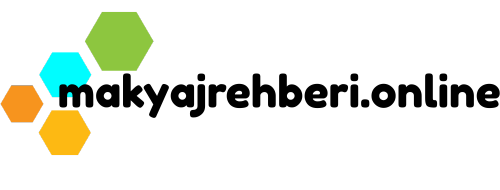If you want to stand out in remote hiring, begin by mastering the fundamentals of how to prepare for a virtual job interview with intention and structure.
Employers now evaluate communication, technical readiness, and follow-through in one compressed session.
Strong preparation reduces anxiety and boosts clarity under pressure. This guide explains why readiness matters, the exact steps to take, and how to convert practice into offers.

Why Mastering Virtual Interviews Matters
A thoughtful strategy turns online interviews into clear demonstrations of judgment, focus, and reliability.
Candidates who prepare communicate decisions faster, recover from glitches smoothly, and collaborate with greater ease.

Preparation also signals respect for the interviewer’s time. In competitive markets, those small advantages compound into meaningful outcomes. Use this section to understand the career upside behind deliberate practice and consistent habits.
Competing In A Crowded Hiring Landscape
Virtual interviews compress many applicants into the same calendar window, which raises the bar for clarity and poise.
Prepared candidates anticipate logistics, trim rambling, and present results with measurable impact. That competence helps hiring teams differentiate strong contributors from hopeful generalists.
By tightening stories and rehearsing delivery, you protect valuable minutes. The impression you create early often shapes everything that follows.
Meeting Modern Employer Expectations
Teams expect you to navigate platforms without friction, adapt to different interview formats, and share screens confidently.
Preparation shows you can communicate across time zones, tools, and functions while staying composed. When you handle technology and conversation flow smoothly, interviewers focus on substance, not mechanics.
That shift keeps attention on outcomes, not errors. Simple readiness becomes a proxy for day one effectiveness.
Reducing Risk For Hiring Managers
Managers hire to solve problems quickly, so they scan for reliability and speed to value.
Preparation lowers perceived onboarding risk because it demonstrates systems thinking, attention to detail, and ownership. Clear examples, structured answers, and documented results reassure decision makers.
When you anticipate follow-up questions, you build trust. That trust makes approval chains shorter and offers faster.
Accelerating Long-Term Career Agility
Virtual interviews happen for promotions, internal transfers, and cross-functional roles, not just first jobs.
By building repeatable routines now, you avoid starting from zero later. Practice strengthens habits that help in presentations, stakeholder updates, and sales calls.
Your interview muscle becomes a versatile career asset. Consistency across roles compounds, making each pivot easier and faster.
Research And Role Alignment Before The Call
The best interviews feel like collaborative problem-solving because the candidate already understands the context.

Strong research aligns your stories with real needs, not generic talking points. It also clarifies what to ask and what to avoid.
Use this section to anchor your preparation around the role’s competencies, business goals, and constraints. Alignment turns knowledge into credibility.
Decoding The Job Description
Translate the description into a competency map with hard skills, tools, and behaviors the team values. Group responsibilities into themes, then pair each theme with one strong story showing measurable outcomes.
Confirm where your experience overlaps and where it stretches. Plan honest explanations for gaps with practical learning steps. This approach keeps answers focused and relevant.
Studying The Company And Team
Investigate the company’s products, customers, and recent initiatives to understand pressures and priorities. Scan earnings summaries, product updates, and leadership pages for current direction.
Map how your capabilities support near-term objectives, not distant ambitions. Tie examples to outcomes that leaders track, like retention, conversion, or uptime. When your stories mirror their metrics, conversations move faster.
Preparing Value Stories That Land
Craft concise narratives using situation, task, action, and result to show judgment and impact. Quantify improvements with baseline and after numbers to anchor credibility. Practice trimming jargon so non specialists follow easily.
Prepare one backup story for each theme in case interviewers probe deeper. Tight stories reduce drift and invite productive questions that highlight your strengths.
Planning Questions That Reveal Fit
Write focused questions about strategy, success metrics, onboarding plans, and cross-team collaboration. Avoid topics easily found on public pages, and aim for clarity that shows you did the work.
Good questions uncover expectations and hidden constraints. They also help you evaluate whether the environment supports growth. Curiosity delivered with context demonstrates professionalism and intent.
Tech Setup And Environment Readiness
Technical friction disrupts attention, breaks momentum, and raises stress for everyone. A stable, quiet environment lets your content carry the meeting.

Investing thirty minutes in setup prevents avoidable mistakes and gives you confidence from the first hello. Use these practices to keep the focus where it belongs. Smooth mechanics make strong ideas easier to hear.
Testing Your Devices And Software
Update the meeting app, restart your device, and close heavy programs to protect bandwidth and memory. Test your microphone for clarity, camera framing for eye level alignment, and screen share permissions.
Place the window near the camera so your gaze reads as direct. Keep a charger connected and notifications silenced. These checks remove surprises and protect the flow.
Optimizing Background, Framing, And Lighting
Choose a quiet backdrop with minimal visual clutter and contrasting colors that separate you from the background. Use front-facing light near eye level to avoid shadows and harsh highlights.
Frame your shoulders and head comfortably, leaving space above for natural movement. Sit at a stable desk instead of a couch to support posture. Small tweaks create a polished impression.
Ensuring Reliable Internet And Backups
Connect through wired Ethernet when possible, or position near the router to strengthen the signal. Ask household members to pause streaming during the interview window to prioritize bandwidth.
Keep a mobile hotspot ready as a backup and save dial-in details in your calendar. Share a quick contingency plan at the start if issues arise. Preparedness communicates calm competence.
Communication, Presence, And Interview Etiquette
Clear, concise communication proves you respect time and understand structure. Presence is not volume; it is focused attention and disciplined pacing that lets ideas land.

Etiquette is supported by both setting expectations and avoiding small frictions. This section shows how to project confidence without theatrics. Aim for steady energy, crisp examples, and thoughtful listening that builds rapport.
Opening Strong And Setting Pace
Join two to three minutes early, confirm audio quickly, and greet with a friendly, professional tone. Thank interviewers for their time, then offer a brief overview of relevant experience that frames the conversation.
Keep sentences measured to avoid rushing or drifting. Early clarity signals control and reduces interruptions. First impressions shape the rest of the session.
Answering With Structured Frameworks
Use situation, task, action, and result to keep answers linear and digestible. Lead with the outcome, then explain the key decisions that drove it. Name the obstacles you faced and how you mitigated risks.
Close with what you learned and how you applied it later. That pattern demonstrates judgment, not just activity, and invites meaningful follow-ups.
Managing Nonverbal Signals On Camera
Sit tall with relaxed shoulders, keep your hands visible occasionally, and maintain a natural gaze near the lens. Nod to show listening, pause briefly after key points, and avoid fidgeting that distracts.
Smile when appropriate to warm the tone without forcing enthusiasm. Nonverbal control conveys poise and makes your message easier to absorb. Consistency beats intensity every time.
Conclusion
Virtual interviews reward structure, presence, and careful follow-through. You learned why readiness matters, how research aligns stories with business needs, and how environment and technology keep attention on substance.
You also saw a practice cycle that strengthens delivery and a blueprint that turns preparation into a habit. Adopt the routines, refine them through feedback, and measure outcomes. With consistent execution, your next virtual conversation becomes an offer.












